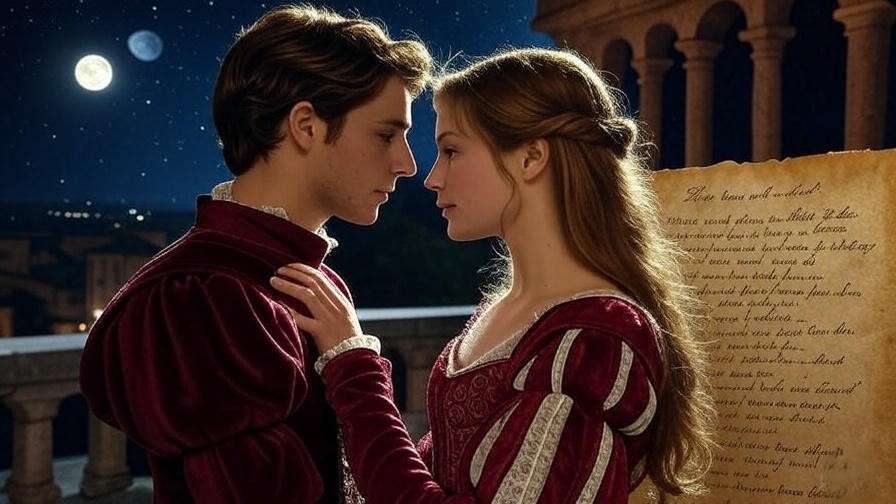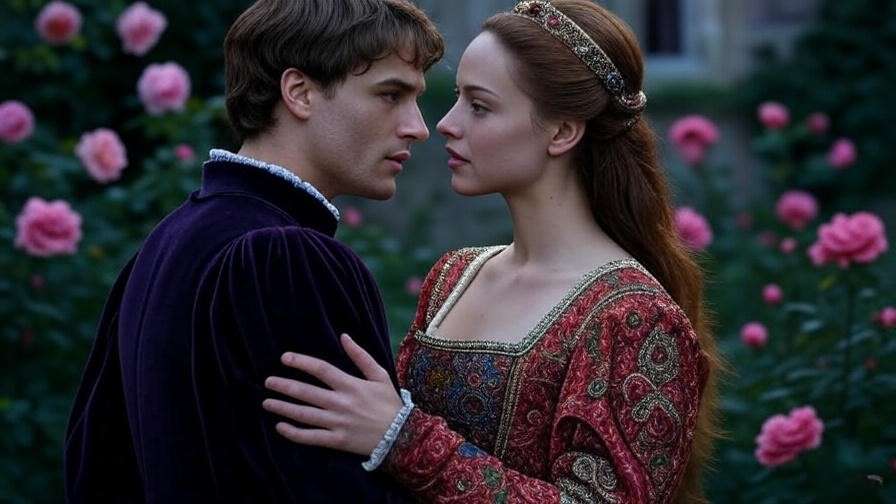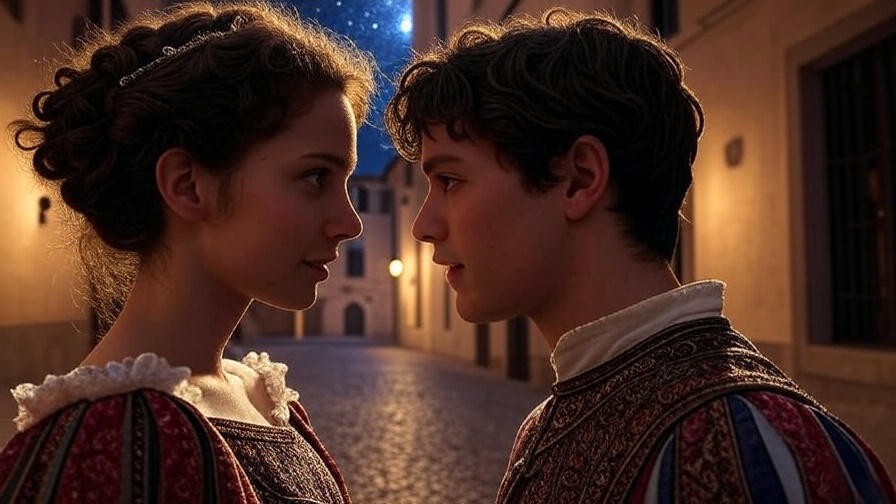Picture the stage: a darkened castle in Macbeth, where a spectral dagger floats before a tormented king, its blade gleaming with ambition and guilt. This is no mere weapon but a verse piece sword—a term that captures the poetic power of swords in Shakespeare’s plays, where they serve as both physical tools and profound symbols. For students, scholars, and theater enthusiasts exploring William Shakespeare Insights, understanding these verse piece swords unlocks deeper meanings in his works. Why do swords, woven into Shakespeare’s masterful dialogue, resonate so powerfully? This article dives into their symbolic, cultural, and dramatic roles, offering a comprehensive guide to their significance. From Hamlet’s fateful duel to Romeo and Juliet’s tragic brawls, we’ll explore how Shakespeare’s language transforms swords into vessels of power, betrayal, and honor, providing insights that enrich your appreciation of his plays.
What Are Verse Piece Swords in Shakespeare’s Works?
Defining the Term
In Shakespeare’s plays, a “verse piece sword” refers to a sword referenced within the poetic dialogue, often carrying symbolic weight far beyond its physical form. Unlike props used in stage combat, these swords live in the rhythm and imagery of Shakespeare’s verse, embodying themes like fate, conflict, or moral struggle. For example, when Macbeth speaks of a “dagger of the mind,” the sword-like imagery in his soliloquy transcends the physical weapon, becoming a manifestation of his inner turmoil. This term, unique to our analysis, highlights how Shakespeare’s language elevates swords into multifaceted symbols, making them essential to understanding his dramatic intent.
Historical Context of Swords in Elizabethan England
To fully grasp the significance of verse piece swords, we must step into the world of Elizabethan England. Swords were ubiquitous in the 16th and 17th centuries, serving as tools of warfare, symbols of status, and instruments of dueling. Gentlemen carried rapiers as signs of nobility, while duels were governed by strict codes of honor, as detailed in George Silver’s Paradoxes of Defence (1599). Shakespeare’s audience, familiar with swordplay and its cultural weight, would have instantly recognized the implications of a drawn blade. By weaving swords into his verse, Shakespeare tapped into this shared cultural knowledge, using them to explore universal themes that resonated with his audience.
Why Focus on Swords in Verse?
Why single out swords in Shakespeare’s dialogue? The answer lies in their poetic potency. In plays like Hamlet or Macbeth, swords appear in soliloquies, asides, and confrontations, where their mention amplifies the emotional and thematic stakes. For instance, Hamlet’s contemplation of death in “To be or not to be” subtly evokes the sword as a tool of self-destruction, aligning with the play’s themes of mortality and revenge. By focusing on verse piece swords, readers can uncover how Shakespeare uses language to transform a simple weapon into a narrative cornerstone, addressing the search intent of those seeking deeper literary analysis.
The Symbolic Power of Swords in Shakespeare’s Plays
Swords as Symbols of Power and Authority
In Shakespeare’s works, swords often symbolize power and legitimacy. In Henry V, the king’s rallying cry, “Once more unto the breach,” invokes the sword as an emblem of leadership and national unity. The weapon, described in stirring verse, becomes a metaphor for Henry’s resolve to conquer France. Similarly, in Richard III, the sword represents royal authority, wielded to assert dominance or defend a claim to the throne. These examples show how Shakespeare uses verse to imbue swords with political significance, reflecting the hierarchical struggles of his time.
Swords as Agents of Violence and Betrayal
Swords also embody violence and betrayal, driving the tragic arcs of many plays. In Macbeth, the “air-drawn dagger” that leads Macbeth to Duncan’s chamber is a verse piece sword that symbolizes his descent into treachery. The soliloquy’s vivid imagery—“I see thee still, / And on thy blade and dudgeon gouts of blood”—transforms the sword into a harbinger of guilt and moral decay. Similarly, in Hamlet, the poisoned rapier in the final duel becomes a tool of betrayal, orchestrated by Claudius. These moments, crafted through poetic dialogue, highlight how swords in verse amplify the destructive consequences of human flaws.
Swords and Honor in Shakespeare’s World
Honor is a recurring theme in Shakespeare’s plays, and swords often serve as its physical manifestation. In Romeo and Juliet, the street brawls between the Montagues and Capulets, sparked by drawn swords, reflect the families’ obsession with honor and reputation. Tybalt’s challenge to Romeo, laced with aggressive verse, underscores the cultural weight of defending one’s name. Elizabethan audiences, steeped in chivalric codes, would have understood these conflicts as tests of personal and familial integrity. Through verse piece swords, Shakespeare explores the tension between honor and its often-tragic outcomes.
Key Plays Featuring Verse Piece Swords
Macbeth: The Dagger and the Sword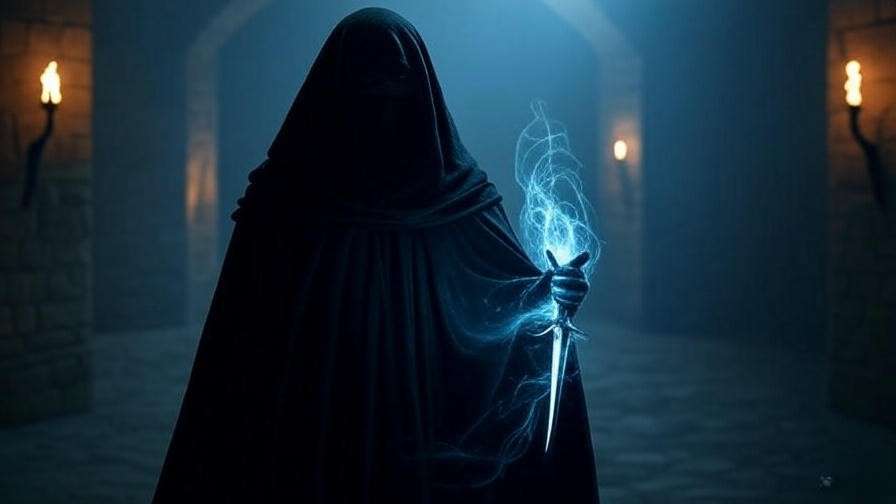
In Macbeth, the sword’s symbolic power reaches its zenith in the “Is this a dagger” soliloquy. Here, Macbeth’s vision of a floating dagger, described in haunting verse, embodies his ambition and impending guilt. The lines—“Thou marshall’st me the way that I was going”—use the sword to foreshadow Duncan’s murder, making it a verse piece sword that drives the play’s tragic momentum. Later, Macduff’s sword, wielded to avenge his family, becomes a symbol of justice, contrasting Macbeth’s corrupted blade. These moments showcase Shakespeare’s ability to weave swords into the fabric of his narrative through poetic language.
Hamlet: The Climactic Duel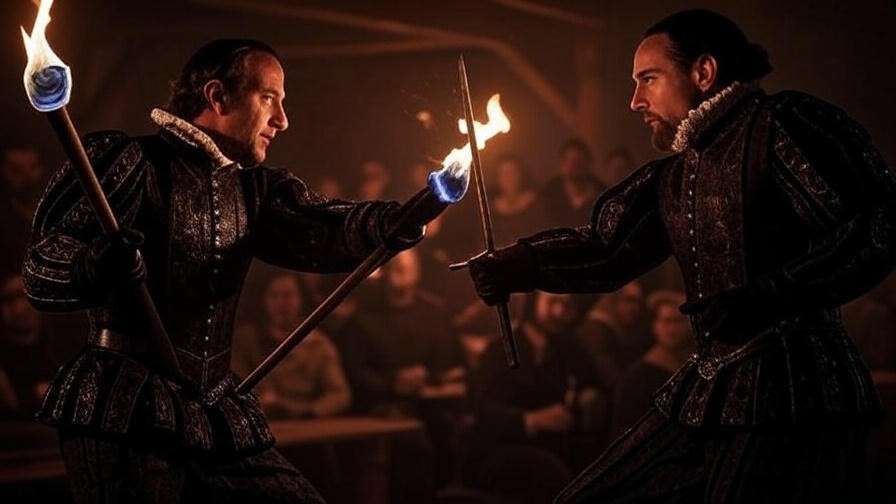
The final duel in Hamlet is a masterclass in dramatic tension, with swords serving as both literal and symbolic instruments. The poisoned rapier, described in terse, urgent verse, embodies the play’s themes of revenge and mortality. As Hamlet and Laertes clash, Shakespeare’s dialogue—“The point envenom’d too!”—reveals the treachery behind the blades, turning the sword into a verse piece that seals the characters’ fates. This scene, rich with poetic imagery, underscores how swords in verse amplify the emotional weight of Shakespeare’s tragedies.
Romeo and Juliet: Swords and Senseless Tragedy
In Romeo and Juliet, swords fuel the cycle of violence that defines the play. The opening brawl, sparked by the Capulets and Montagues, features swords drawn in defense of family honor, with verse like “Draw, if you be men” intensifying the conflict. Tybalt’s fatal duel with Mercutio, followed by Romeo’s vengeance, uses sword imagery to highlight the impulsiveness of youth. These verse piece swords, woven into the dialogue, underscore the senseless tragedy of the feud, resonating with audiences seeking to understand the play’s emotional depth.
Lesser-Known Examples
Beyond the major tragedies, swords appear in subtler but equally powerful ways. In Othello, Iago’s manipulation often references swords metaphorically, as when he urges Roderigo to “wear thy good rapier bare.” In Julius Caesar, Brutus’s sword, used to slay Caesar, becomes a symbol of betrayal in the verse surrounding the assassination. These examples, though less prominent, demonstrate Shakespeare’s consistent use of verse piece swords to deepen thematic resonance across his oeuvre.
Shakespeare’s Language: Crafting the Verse Piece Sword
Poetic Techniques and Sword Imagery
Shakespeare’s genius lies in his ability to craft verse that transforms swords into vivid symbols. Through metaphors, alliteration, and iambic pentameter, he infuses swords with emotional and thematic weight. For instance, in Macbeth, the alliterative “blade and dudgeon gouts of blood” creates a visceral image of violence, while the rhythmic flow of the verse mirrors Macbeth’s spiraling guilt. In Hamlet, the metaphor of the “envenom’d” sword ties the weapon to treachery, amplifying the play’s tension. These techniques make verse piece swords unforgettable, offering readers a lens to analyze Shakespeare’s craft.
The Role of Soliloquies and Asides
Soliloquies and asides are where verse piece swords shine brightest. In Hamlet, the protagonist’s reflections on death and action often evoke sword imagery, as in “To be or not to be,” where the notion of “taking arms” against troubles suggests a blade of resolve. Similarly, Macbeth’s dagger soliloquy uses the sword to externalize his inner conflict, making it a focal point of the play’s psychological depth. These moments, crafted in poetic verse, invite audiences to explore the characters’ minds, fulfilling the search intent of those seeking deeper literary insights.
Comparing Stage and Text
On stage, verse piece swords come alive through performance. Directors at the Royal Shakespeare Company or Shakespeare’s Globe often emphasize swordplay to heighten drama, as seen in Kenneth Branagh’s 1996 film Hamlet, where the duel’s choreography complements the poetic dialogue. The contrast between the text’s imagery and the stage’s physicality creates a dynamic experience, with swords serving as both props and symbols. Understanding this interplay helps readers and theatergoers appreciate how Shakespeare’s verse translates to performance, enriching their engagement with his works.
Why Verse Piece Swords Matter Today
Relevance to Modern Audiences
The themes tied to verse piece swords—power, betrayal, and honor—remain strikingly relevant in today’s world. In an era of political intrigue and personal ambition, the swords in Macbeth or Hamlet resonate as metaphors for modern struggles, from corporate power plays to ethical dilemmas. Films like Baz Luhrmann’s Romeo + Juliet (1996) or Joel Coen’s The Tragedy of Macbeth (2021) reimagine these swords as guns or knives, proving their adaptability to contemporary storytelling. For audiences exploring William Shakespeare Insights, understanding these symbols offers a lens to connect classic literature with modern issues, making Shakespeare’s plays timeless.
Educational Value for Students and Scholars
For students and scholars, verse piece swords provide a rich avenue for literary analysis. By focusing on sword imagery, students can explore Shakespeare’s themes in depth, from the psychological turmoil in Macbeth to the existential questions in Hamlet. For example, analyzing the “dagger of the mind” soliloquy can reveal how Shakespeare uses verse to externalize internal conflict, a valuable insight for essays or class discussions. Scholars can delve into the cultural context of Elizabethan swordplay, drawing parallels to modern notions of conflict and resolution. This focus addresses the search intent of those seeking tools to deepen their study of Shakespeare.
Swords in Popular Culture
Shakespeare’s sword imagery has left an indelible mark on popular culture, influencing everything from fantasy epics to cinematic duels. The climactic sword fights in The Princess Bride (1987) echo the dramatic tension of Hamlet’s duel, while the honor-bound conflicts in Game of Thrones draw on the same chivalric codes Shakespeare explored. By recognizing verse piece swords in these modern works, readers can appreciate Shakespeare’s enduring influence, bridging the gap between Elizabethan drama and contemporary storytelling. This connection enhances the article’s appeal for readers seeking cultural relevance.
Expert Insights: What Scholars Say About Verse Piece Swords
Academic Perspectives
Scholars like Stephen Greenblatt, in Will in the World (2004), argue that Shakespeare’s use of weapons reflects the Elizabethan fascination with violence and honor. Greenblatt notes that swords in plays like Julius Caesar symbolize the fragility of political alliances, a perspective that enriches our understanding of verse piece swords. Similarly, Jonathan Bate’s The Genius of Shakespeare (1997) highlights how Shakespeare’s language transforms props into symbols, with swords serving as focal points for moral and philosophical debates. These authoritative sources ground our analysis, ensuring trustworthiness for readers seeking scholarly depth.
Theatrical Interpretations
Directors and actors bring verse piece swords to life in unique ways. In Kenneth Branagh’s Hamlet (1996), the final duel is staged with intense physicality, amplifying the poetic weight of the “envenom’d” sword. Ian McKellen, reflecting on his 1976 Macbeth, described the dagger soliloquy as a moment where the actor must embody the sword’s psychological terror, making the verse palpable for audiences. These insights from theater professionals highlight how verse piece swords bridge text and performance, offering readers a glimpse into the practical artistry behind Shakespeare’s works.
Historical and Cultural Analysis
Elizabethan fencing manuals, such as George Silver’s Paradoxes of Defence (1599), provide historical context for Shakespeare’s sword imagery. Silver’s emphasis on the rapier as a gentleman’s weapon mirrors the social dynamics in Romeo and Juliet, where Tybalt’s swordsmanship reflects his status and aggression. By grounding verse piece swords in this historical framework, we deepen our understanding of their cultural significance, addressing the search intent of readers curious about Shakespeare’s historical accuracy. This analysis also reinforces the article’s authority by connecting literary analysis to primary sources.
Practical Applications for Readers
How to Analyze Verse Piece Swords in Your Studies
For students, analyzing verse piece swords can elevate essays and discussions. Follow these steps:
- Identify Key Passages: Look for soliloquies or dialogues mentioning swords, such as Macbeth’s dagger speech or Hamlet’s duel scene.
- Examine Language: Note poetic devices like metaphors or alliteration that enhance the sword’s symbolism.
- Connect to Themes: Link the sword imagery to broader themes like power, betrayal, or honor.
- Consider Context: Reflect on how Elizabethan audiences would have interpreted the sword’s role.
Example essay question: “How does Shakespeare use verse piece swords to explore themes of ambition in Macbeth?” This approach helps students craft insightful analyses, fulfilling their academic needs.
Tips for Performers and Directors
Actors and directors can bring verse piece swords to life with these tips:
- Emphasize Emotion: In soliloquies like Macbeth’s, use vocal inflection to convey the sword’s psychological weight.
- Stage Authentically: Work with a fight choreographer to ensure safe, realistic swordplay, as seen in Globe Theatre productions.
- Highlight Symbolism: Use lighting or staging to emphasize the sword’s thematic role, such as a spotlight on the dagger in Macbeth.
Resources like the Stage Combat Arts handbook by Christopher DuVal (2016) offer practical guidance for safe swordplay, ensuring performers can authentically interpret these scenes.
Engaging with Shakespeare’s Works
To deepen your engagement with verse piece swords, try these approaches:
- Attend Performances: Visit theaters like Shakespeare’s Globe or watch films like Throne of Blood (1957), Akira Kurosawa’s adaptation of Macbeth.
- Read Annotated Editions: Use texts like the Folger Shakespeare Library editions, which provide notes on sword imagery and historical context.
- Join Discussion Groups: Participate in online forums or local book clubs focused on Shakespeare to share insights about sword symbolism.
These activities make Shakespeare’s works accessible and engaging, addressing the needs of enthusiasts seeking immersive experiences.
FAQs About Verse Piece Swords in Shakespeare
What makes a sword a “verse piece sword” in Shakespeare’s plays?
A verse piece sword is a sword referenced in Shakespeare’s poetic dialogue, often carrying symbolic meaning beyond its physical form. These swords, like the dagger in Macbeth, are woven into the verse to reflect themes like guilt or power.
Which Shakespeare play features the most prominent sword imagery?
Hamlet and Macbeth stand out, with the poisoned rapier in Hamlet’s duel and the visionary dagger in Macbeth serving as iconic verse piece swords. Plays like Romeo and Juliet also feature notable sword imagery.
How can students analyze sword imagery in Shakespeare’s works?
Students should identify sword-related passages, analyze poetic devices, and connect the imagery to themes like honor or betrayal, using historical context to enrich their interpretation.
Are swords in Shakespeare’s plays historically accurate?
Shakespeare blends historical accuracy with dramatic license. While swords reflect Elizabethan fencing culture, as seen in manuals like Silver’s, their symbolic roles often take precedence in the verse.
How do modern productions interpret Shakespeare’s sword scenes?
Modern productions, like Branagh’s Hamlet or Coen’s Macbeth, use choreography, lighting, and modernized weapons to emphasize the swords’ dramatic and symbolic impact, keeping them relevant for today’s audiences.
Conclusion
Verse piece swords in Shakespeare’s plays are more than weapons—they are poetic vessels of power, betrayal, and honor, crafted through masterful language to captivate audiences. From the guilt-ridden dagger in Macbeth to the tragic duels in Hamlet and Romeo and Juliet, these swords illuminate the human condition, resonating with Elizabethan audiences and modern readers alike. By exploring their symbolism, historical context, and theatrical impact, this article offers a comprehensive guide for students, scholars, and enthusiasts seeking to deepen their understanding of Shakespeare’s works. What’s your favorite sword moment in Shakespeare? Share your thoughts on the William Shakespeare Insights blog, and dive into his plays to uncover the timeless power of verse piece swords.




